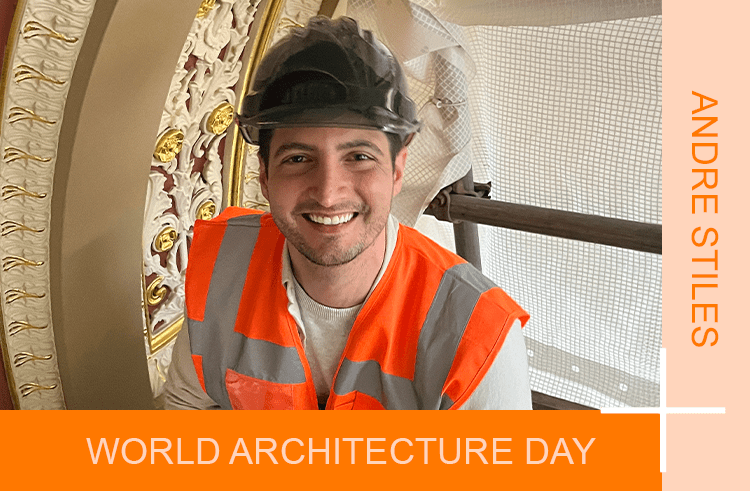World Architecture Day: Andre Stiles
This years theme for World Architecture Day is ‘Empowering the Next Generation in Participatory Urban Design’ – What projects are you working on that align with this theme and why?
My projects are centred around the fundamentals of conservation, restoration, and reuse. I think the solution to many of our contemporary urban design challenges can be improved by consolidating and focusing on the embodied energy already invested into the built environment. From working on major art galleries to repurposing Georgian townhouses, I am learning how buildings at all scales fit into the fabric of people that use and benefit from them while understanding the principles of sustainable construction practices.
Why is it important to take the views of younger architects into account when it comes to urban planning and development?
All of us are stakeholders in the future of our built environment and it is vital that our approaches and actions are reviewed and questioned to ensure continued progress; learning from past decisions that were once the cutting edge of development may now be obvious mistakes that negatively affect sustainable practices and social justice. Younger architects who are affected by these past choices can provide alternative solutions to make real and lasting change.
What are the biggest urban sustainability challenges facing architects?
While the need for new housing is at a crucial point, the dangers of urban sprawl and the destruction of native habitat are real threat. This is especially true if these cookie cutter solutions present a faster and cheaper product that those in power can lean on to gain political or economic advantages. As architects it is our duty of care to the environment and to future generations to make informed decisions on what our cities and towns can and should be. Short-term profit cannot be a driving force as this only benefits a small percentage of people who can afford to ignore the effects of their actions.

